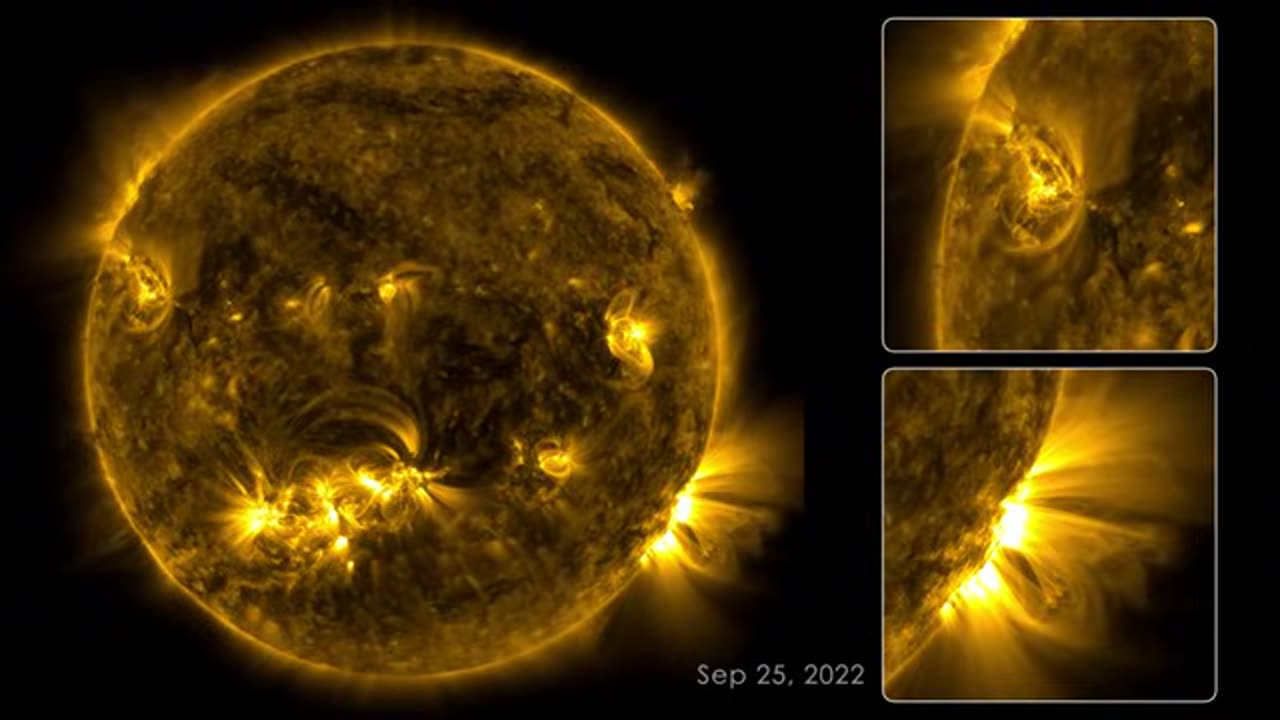Premium Only Content

133 Days on the Sun !!
133 Days on the Sun !!
chronicles solar activity from Aug. 12 to Dec. 22, 2022, as captured by NASA’s Solar Dynamics Observatory (SDO). From its orbit in space around Earth, SDO has steadily imaged the Sun in 4K x 4K resolution for nearly 13 years. This information has enabled countless new discoveries about the workings of our closest star and how it influences the solar system. With a triad of instruments, SDO captures an image of the Sun every 0.75 seconds. The Atmospheric Imaging Assembly (AIA) instrument alone captures images every 12 seconds at 10 different wavelengths of light. This 133-day time lapse showcases photos taken at a wavelength of 17.1 nanometers, which is an extreme-ultraviolet wavelength that shows the Sun’s outermost atmospheric layer: the corona. Compiling images taken 108 seconds apart, the movie condenses 133 days, or about four months, of solar observations into 59 minutes. The video shows bright active regions passing across the face of the Sun as it rotates. The Sun rotates approximately once every 27 days. The loops extending above the bright regions are magnetic fields that have trapped hot, glowing plasma. These bright regions are also the source of solar flares, which appear as bright flashes as magnetic fields snap together in a process called magnetic reconnection. While SDO has kept an unblinking eye pointed toward the Sun, there have been a few moments it missed. Some of the dark frames in the video are caused by Earth or the Moon eclipsing SDO as they pass between the spacecraft and the Sun. Other blackouts are caused by instrumentation being down or data errors. SDO transmits 1.4 terabytes of data to the ground every day.
On the left side of the frame is the full circle of the Sun. It appears in a golden yellow color, but splotchy and with thin yellow wisps extending from the surface. Some areas are very bright and others almost black. The whole Sun rotates steadily, with one full rotation taking 12 minutes in this time lapse. There are usually only a few bright regions visible at a time and they shift and flash like small fires. From these regions there are wispy loops reaching up above the surface that rapidly change shape and size. On the right side of the frame are two white-outlined squares with enlargements of interesting regions of the Sun.
NASA’s Goddard Space Flight Center · Instagram http://www.instagram.com/nasagoddard · Twitter http://twitter.com/NASAGoddard · Twitter http://twitter.com/NASAGoddardPix · Facebook: http://www.facebook.com/NASAGoddard · Flickr http://www.flickr.com/photos/gsfc
-
 37:55
37:55
Forrest Galante
2 hours agoPrivate Tour of The World's Best Backyard Reptile Zoo
5.59K4 -
 14:38
14:38
Exploring With Nug
1 day ago $6.13 earnedWe Found the Secret That This Lake Has Been Hiding For Decades!
35.2K7 -
 LIVE
LIVE
SpartanTheDogg
10 hours agoPro Halo Player
533 watching -
 23:23
23:23
MYLUNCHBREAK CHANNEL PAGE
1 day agoAustralia Was Found
49.3K43 -
 1:41:45
1:41:45
The Connect: With Johnny Mitchell
11 hours ago $8.75 earnedMexican Cartels Are Moving MORE Drugs Than Ever, Going To WAR On The Government (Emergency Update)
24.8K4 -

MissesMaam
7 hours agoFinishin' Red Dead Redemption 💚✨
47K6 -
 34:44
34:44
LFA TV
5 days agoMIRACLES DO HAPPEN!
62K1 -
 LIVE
LIVE
GamersErr0r
2 hours ago $0.36 earnedMooning My Community
208 watching -
 2:22:59
2:22:59
Banks Atkin Live
5 hours agoChilling playing Games & Vibin
40.1K1 -
 LIVE
LIVE
Dragoon_B
6 hours agoNothing crazy - just Counter Strike + Valorant
85 watching